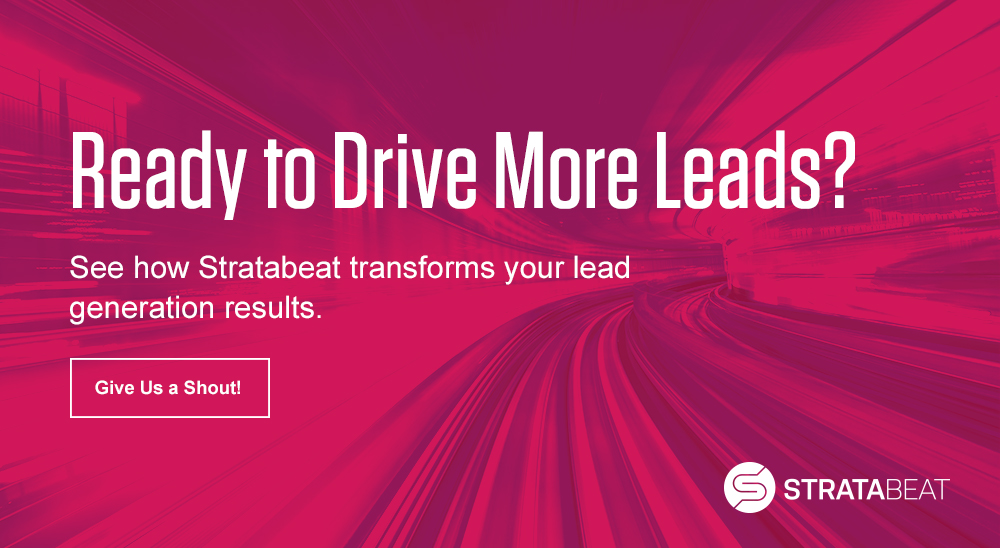Using Page-Level Targeting to Transform Your Lead Generation Efforts

Imagine going to a restaurant and being told that there was only one dish you could order. Unless you really loved that particular dish, you probably wouldn’t hang around for too long.
Or imagine going to a car mechanic because you need to get your brakes changed, only to be told that the only service they offer is oil changes. You’ll take your business elsewhere.
As outlandish as these scenarios may seem, many websites operate like the one-dish restaurant or the car mechanic who only does oil changes.
The individual web pages do not cater to the specific needs and desires of the relevant audience segments.
Instead of catering the message to the needs of the visitor on a given page, they offer messaging and content in a cookie-cutter, set-it-and-forget-it way throughout the entire site.
And the reality is that if your B2B site doesn’t cater to your various audience segments’ needs, your site visitors are much less likely to turn into a lead, which ultimately means fewer sales.
OptinMonster reported that a whopping 75% of visitors end up frustrated if a website doesn’t cater to their specific needs. 75%! That’s a lot of leads left on the table.
So how do you ensure that your website is speaking directly to what matters most to your website visitors?
Page-level targeting.
Multiple Buyers, Multiple Segments
As a B2B business, you’re targeting more than one kind of buyer. You’re targeting people on a variety of customer journeys, within a number of different audience segments.
The implication is that some pages of your website will appeal to a specific portion of your audience, while other pages will appeal to other segments related to different personas.
Different folks, different strokes.
If you want to gain as many leads as possible, you need to show the right content to the right people at the right time.
If you show people content that isn’t relevant to them, they simply won’t convert.
There are certain strategies that you can take to make it easier for your site to address multiple audience segments in a customized manner. In addition, new technology is making it easier than ever to target specific audiences with specific pages and content on your website.
And the more you use page-level targeting to present your audience with relevant content, the more leads you’ll acquire.
Better B2B Lead Generation with Page-Level Targeting
Ready to implement page-level targeting in your website? Give us a shout!
What Is Page-Level Targeting?
Let’s get specific on exactly what page-level targeting is.
Page-level targeting is used to reach a specific audience at the very moment they’re interacting with a particular page on your website. In other words, you’re presenting the audience with the right content (content that resonates) at the right time to create the optimal user experience.
This can include content, visuals, messaging and calls-to-action (CTAs).
For example, let’s say a visitor is on your site and she’s looking for a tool to streamline her business accounting processes. You offer a variety of services, including accounting, reporting, business valuations and taxes. Which of these services do you think she will be most interested in? Obviously, accounting.
If she lands on your accounting services page and sees a CTA offering a downloadable ebook related to taxes, she’s not going to opt in.
However, if she lands on the accounting services page and is presented with a CTA for a downloadable ebook (or software demo, webinar, free consultation, etc.) about accounting, she’s much more likely to respond to the CTA.
The content matches both the overarching message about accounting and the desire of the site visitor.
Methods Of Page-Level Targeting
There are a number of different approaches you can take to page-level targeting, as outlined below.
Self-Segmentation
The most straightforward way is to have site visitors self-segment themselves, and then you present each group with content that is relevant only to them.
For example, the BI software company Domo has site visitors self-segment themselves according to whether they’re a CEO, in finance, marketing, IT, etc. Each segment is then enveloped in content that is related to their segment.
Interactive Questions
Another method for achieving audience-based targeting is to guide your site visitors through an interactive Q&A process. Based on their answers to your initial questions, you can present a subsequent set of relevant questions based on conditional logic (or “skip logic”), all leading to different content based on the answers provided. This ensures alignment of your content with the specific site visitor’s needs.
Topic Segmentation
Another method is to center all the content on a particular page around a single, tightly defined topic. For example, if you read our post on lead generation trends, you’ll see that, of course, the post is all about lead generation.
But it goes beyond that. If you look closely, you’ll notice that all of the surrounding content is also about lead generation. There are inline text CTAs, related posts, a banner ad, blog tags, and a survey, all related to the subject of lead generation.
We know that if a person is reading our post about lead generation, there’s a good chance that they’re going to be interested in other information about lead generation. The odds that they’ll opt in to one of our CTAs is much higher since it’s about the subject they’re interested in. It’s irrelevant that we offer additional services besides lead generation for technology companies. Page-level targeting means saying “no” to content unless it meets the needs of a specific audience segment.
Amp Up Your B2B Lead Generation Efforts
Many websites might use the same CTA or banner ads across their website. Or, they may display blog thumbnails across the site based on the recency of the posts rather than showing only those posts that are relevant to the specific page. Page-level targeting takes a much more granular approach, presenting different options on different pages based on the desires of the user. This approach is much more effective at getting site visitors to engage further and take action.
Funnel Segmentation
Another page-level targeting option is to set up conversion funnels throughout your website, where you map the page-to-page-to-page journey you’ll guide visitors through according to their interests.
For example, they might start on a blog post about accounting, then be presented with a webinar about accounting, and finally be invited to book a call about how you can help them streamline their accounting process.
IP Segmentation
Another, more sophisticated method would be to use IP-detection to identify members of your database and then personalizing the web pages accordingly. Or you can use ABM solutions such as Demandbase to target specific companies and customize the pages accordingly.
The Power of Page-Level Targeting
Are you starting to get the picture? It’s all about giving site visitors what they want on each respective page.
Page-level targeting shows CTAs and opt-ins to specific visitors on specific pages of your site, like an accounting white paper on your accounting services page, or a page-specific chatbot, etc. When you combine page-level targeting with hypertargeted messaging, you’ll be in a stronger position to increase the volume of leads through your website.
You can take your page-level targeting to another, deeper level when you combine it with behavioral triggers – ensuring that not only is your messaging customized, but that you’re presenting visitors with specific CTAs or links or offers based on their specific behavioral cues. Using tools such as OptinMonster, you can segment your users into groups based on specific behaviors, traits, or even IP addresses, and then serve them only relevant ads, opt-ins, forms, CTAs, surveys, etc.
These targeting techniques could be triggered by time (how long they’ve been on the page), type of visitor (returning, new, logged in, etc.), which page they’re on, and their behavior (exit intent, scroll position, time-on-page, inactivity, etc.).
The result is a highly targeted, customized experience that completely transforms the lead generation horsepower of your website.



